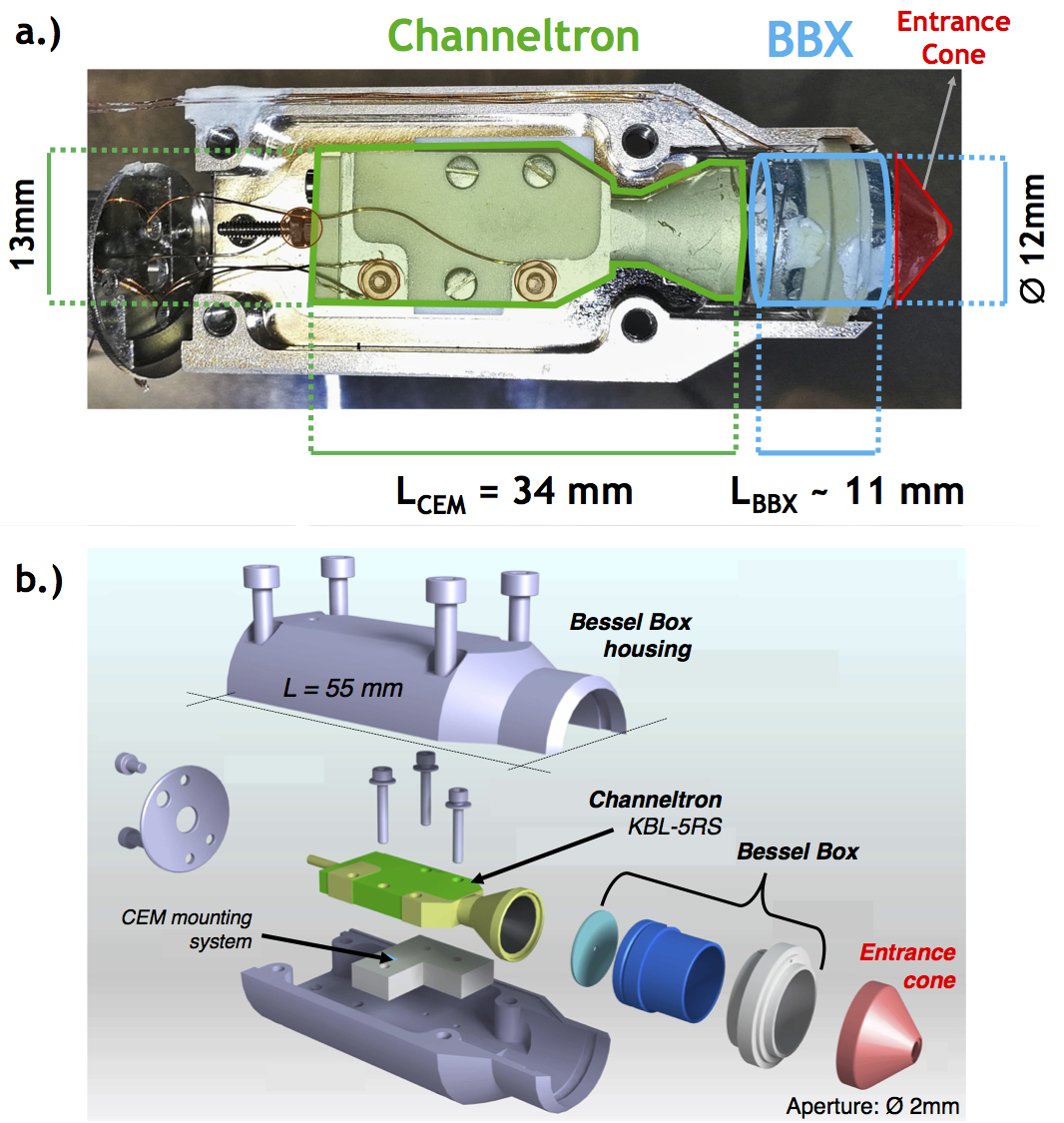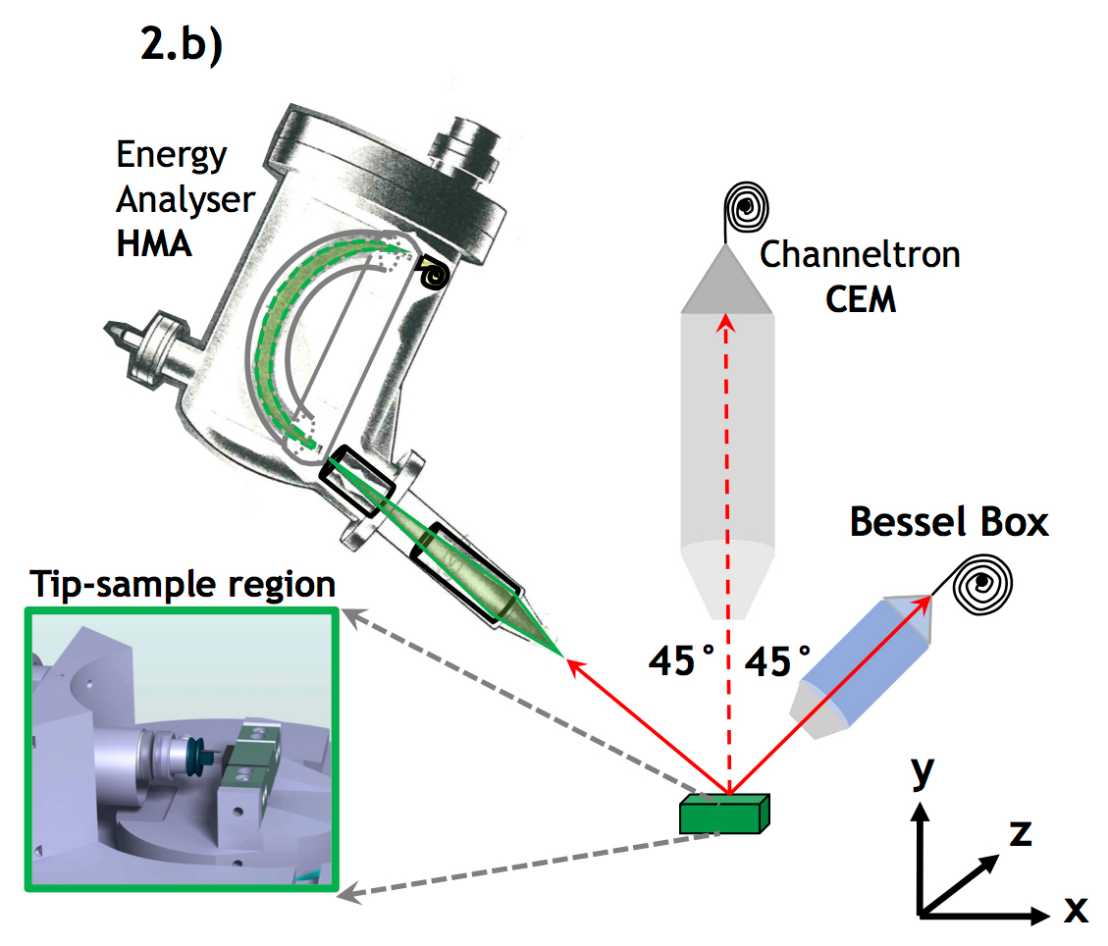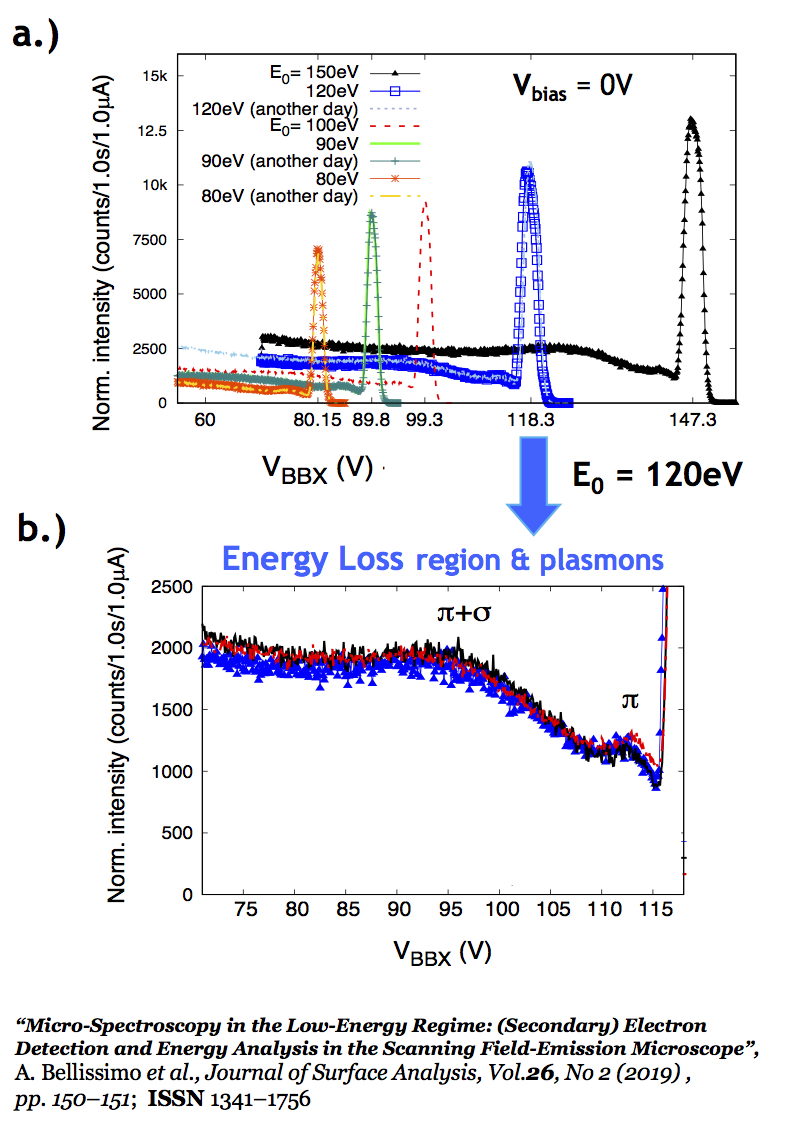Bessel Box Energy Analyzer
To improve the detection of electrons from the junction, a prototype miniature electron detection unit employing a Bessel Box energy analyzer is currently under calibration (see external pageA. Suricall_made, 'Characterization of a Miniature Electron Energy Analyzer for Scanning Electron Microscopes').
The main objective of such a miniature electrostatic electron energy analyzer – with the dimensions of a “pill box” as described by its
inventors (see external pageJ.D. Allencall_made, 'A new Spectrometer Design:II')– is to provide an energy analysis of the electrons along a straight path, in combination with a compact design. The reduced dimensions of this compact energy analyzer would enable to position it in proximity of the interaction region, thus minimizing the aforementioned electric field effects and rendering energy analysis more efficient.
The BBX - Setup

This miniature analyser is composed of a compact cylinder-symmetrical Bessel-Box (abbreviated as BBX; shown in blue) system featuring electron retardation and about 100% electron transmission (grid-less design) followed by the detection unit: a channel electron multiplier (channeltron, green).
The BBX is preceded by an entrance cone (red) which can be optionally set to an accelerating potential, thus increasing the accepted solid angle at the aperture (of 2 mm in diameter).

A plausible upgrade of our SFEM instrument encompassing the use of the Bessel Box is illustrated in Figure 2 b). Our preliminary experimental results demonstrate the capability of this analyzer to collect electron spectra.
Reflection Electron Energy Loss Spectra from Highly Oriented Pyrolytic Graphite
Figure 5 a) shows a series of Reflection Electron Energy Loss Spectra (REELS) measured in the low-kinetic energy range for primary electrons ranging between 80 eV up to ca. 150 eV.
The impinging electron beams is generated by a conventional electron gun and these series of test measurements were conducted in a small test chamber. In all these spectra the relevant spectral features associated to the characteristic \( \pi \) - and (\( \pi \)+\( \sigma \)) - plasmons are evidently recognisable, which demonstrates the capability of this miniature analyser to properly record the energy loss part of the electron spectrum also in the low-energy regime.
The plasmon peaks are particularly evident when looking at the enlarged inset of the electron spectrum acquired with 120 eV - primary electrons (Figure 5 b).

